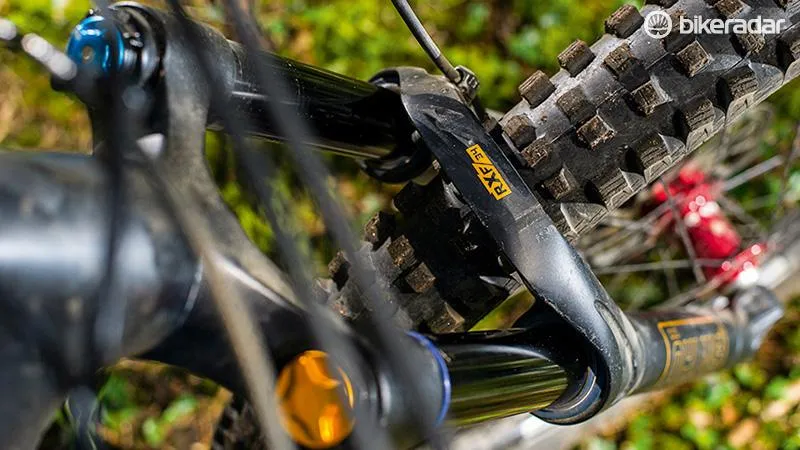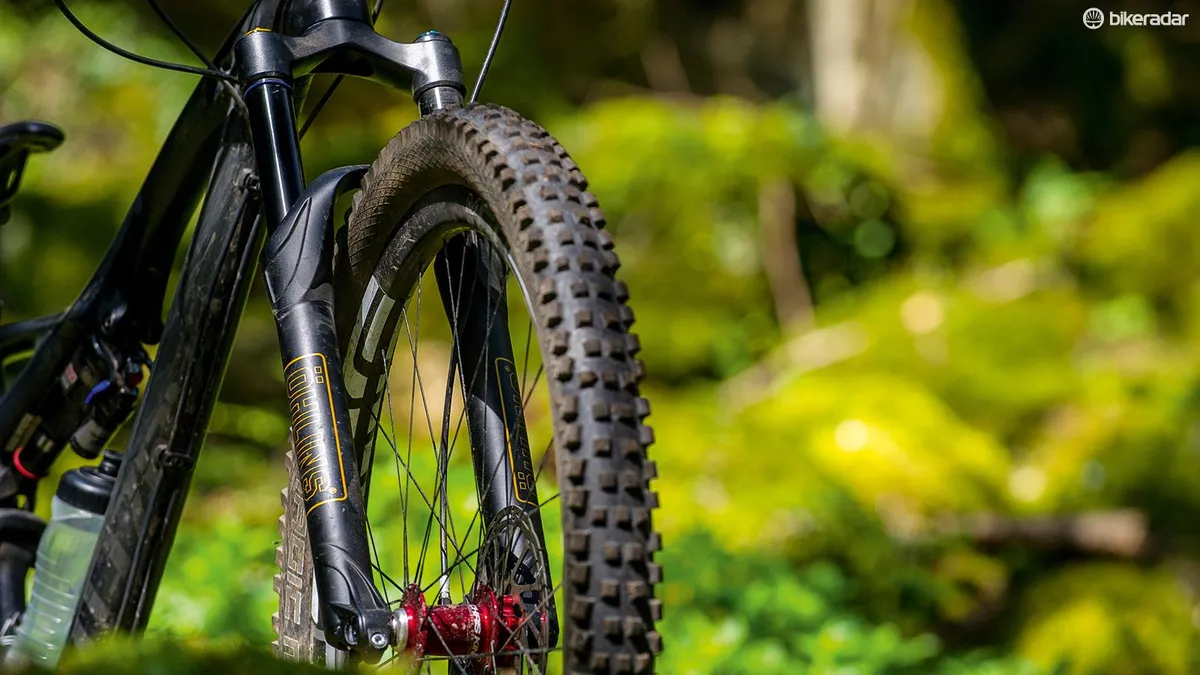When it comes to automotive suspension, Öhlins is one of the most admired brands out there. In recent years the Swedish company has branched out into mountain biking, working closely with Specialized to develop its products. The RXF 34 is its first fork that you don’t need to buy a Specialized to experience.
- 6 top suspension maintenance tips
- Ohlins releases RXF 34 mountain bike fork
- How to adjust the rebound and compression settings on your mountain bike
Interested? Well, you’ll need to check if your bike is compatible first. The RXF 34 is currently only available for 29ers. Then there’s the forged one-piece ‘unicrown’, which does away with a standard crown race and is designed to work with a 40mm ID/45-degree lower bearing, as found in the likes of Specialized’s Hella Flush headset. Axle spacing is 15x100mm rather than the latest Boost 15x110mm standard, and travel is fixed at 120, 140 or 160mm (4.7/5.5/6.3in).
We spent some time playing around with pressures and ended up running the fork a little harder than recommended for our weight
Though the stanchions are 34mm in diameter, Öhlins claims that the one-piece steerer/crown makes the RXF 34 stiffer than most 35mm forks and comparable to those with 36mm legs. Our 140mm fork weighed a competitive 2.06kg. Inside sits a sealed-cartridge twin-tube damper with external high and low-speed compression and rebound adjustment. The Öhlins air spring is split into three chambers — two positive and one negative. It’s the second positive chamber that’s the clever touch here, letting you control the fork’s bottom-out resistance.

We spent some time playing around with pressures and ended up running the fork a little harder than recommended for our weight. Even small changes are easily noticeable on the trail, so taking your time with set-up is crucial. While it didn’t take us long to get to our preferred rebound speed, the compression settings took some fiddling.
In the end we left the high-speed compression fully open, not using a single one of the five very effective clicks of adjustment, and opted to run 12 of the 25 (from fully closed) clicks of low-speed compression. This produced a seriously supple stroke that scratched out traction in loose, rocky turns while still ramping up with plenty of control when tackling the bigger hits.
Although the RXF 34 felt accurate in the steep, tight, rocky turns of our test track, back-to-back testing showed Fox’s 36 RC2 still had the edge — but only slightly — in terms of stiffness when clouting into boulder fields head on. That said, the RXF 34 came out on top in terms of traction and comfort, and never felt out of its depth, even under really heavy cornering loads.


